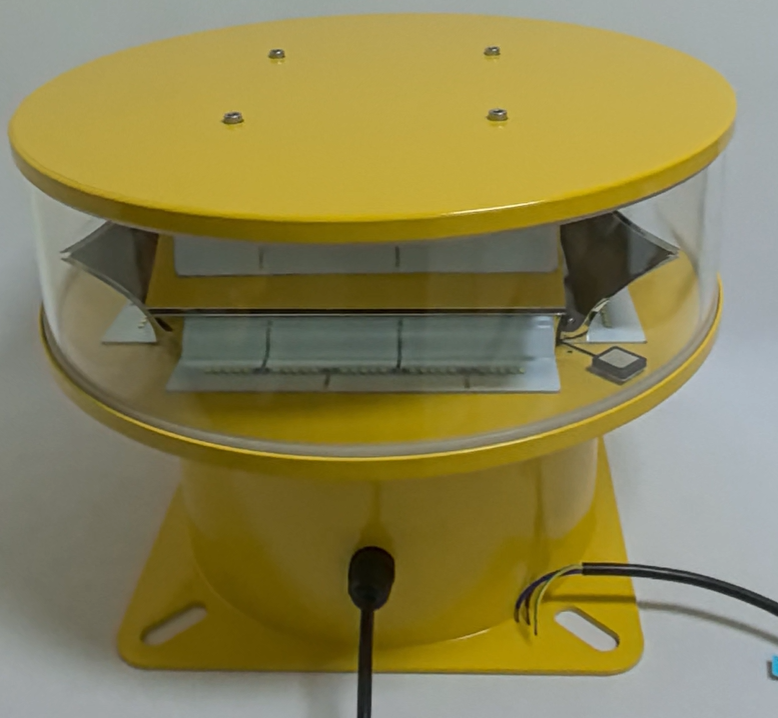
Aeronautical obstruction lights play a crucial and non - replaceable role in the field of aviation safety. These lights are like silent guardians, constantly working to prevent potential disasters.
First of all, let's understand the types of aeronautical obstruction lights. There are mainly low - intensity, medium - intensity and high - intensity lights. Low - intensity lights are usually used for relatively low - height obstacles. They emit a steady glow that can be easily detected by pilots during the day and night within a certain range. Medium - intensity lights are often installed on taller structures such as medium - sized towers. Their brightness and visibility are enhanced compared to low - intensity ones. High - intensity lights are reserved for extremely high or large - scale obstructions, like very tall skyscrapers or huge industrial chimneys. These lights are so powerful that they can be seen from a great distance even under adverse weather conditions.

The installation locations of aeronautical obstruction lights are carefully selected. They are placed on top of obstacles, along the edges of structures that might pose a threat to aircraft in flight paths. For example, bridges that cross busy air corridors need to be equipped with these lights. In addition, construction cranes in urban areas near airports also require proper installation of obstruction lights during the construction period. This is because a crane's height and position can be dangerous to low - flying aircraft, especially during take - off and landing phases.
The color of the aeronautical obstruction lights also has specific meanings. Red is commonly used as it has high visibility and is easily distinguishable from other lights in the environment. In some cases, white lights may also be used in combination with red ones. The color combination and flashing patterns help pilots to quickly identify the nature and location of the obstacle. For instance, a steady red light might indicate a stationary obstacle, while a flashing red light could signify an object with certain moving parts or a hazard with specific characteristics.
In terms of maintenance, regular checks of aeronautical obstruction lights are essential. Any malfunctioning light can lead to serious consequences. Operators need to ensure that the bulbs are in good condition, the power supply is stable, and the light fixtures are properly aligned. In case of a power outage or a damaged light, backup systems should be in place to immediately restore the lighting function. This might involve having redundant power sources or spare light units ready for quick replacement.
Aeronautical Obstruction Lights
ER56
Aeronautical Obstruction Light
RRT55
Moreover, technological advancements are constantly improving aeronautical obstruction lights. New materials are being used to make the lights more durable and resistant to harsh weather conditions. LED technology has become widely adopted due to its energy - efficiency and long lifespan. With the development of smart systems, some obstruction lights can now be remotely monitored and controlled. This allows for real - time detection of problems and more efficient maintenance operations.
In conclusion, aeronautical obstruction lights are an integral part of the aviation safety infrastructure. Their proper installation, operation, and maintenance are of utmost importance. They are the beacons that guide pilots safely through the skies, reducing the risk of collisions with obstacles on the ground. As the aviation industry continues to grow and urban landscapes change, continuous attention and improvement in the design and management of these lights are necessary to ensure the safety of every flight.